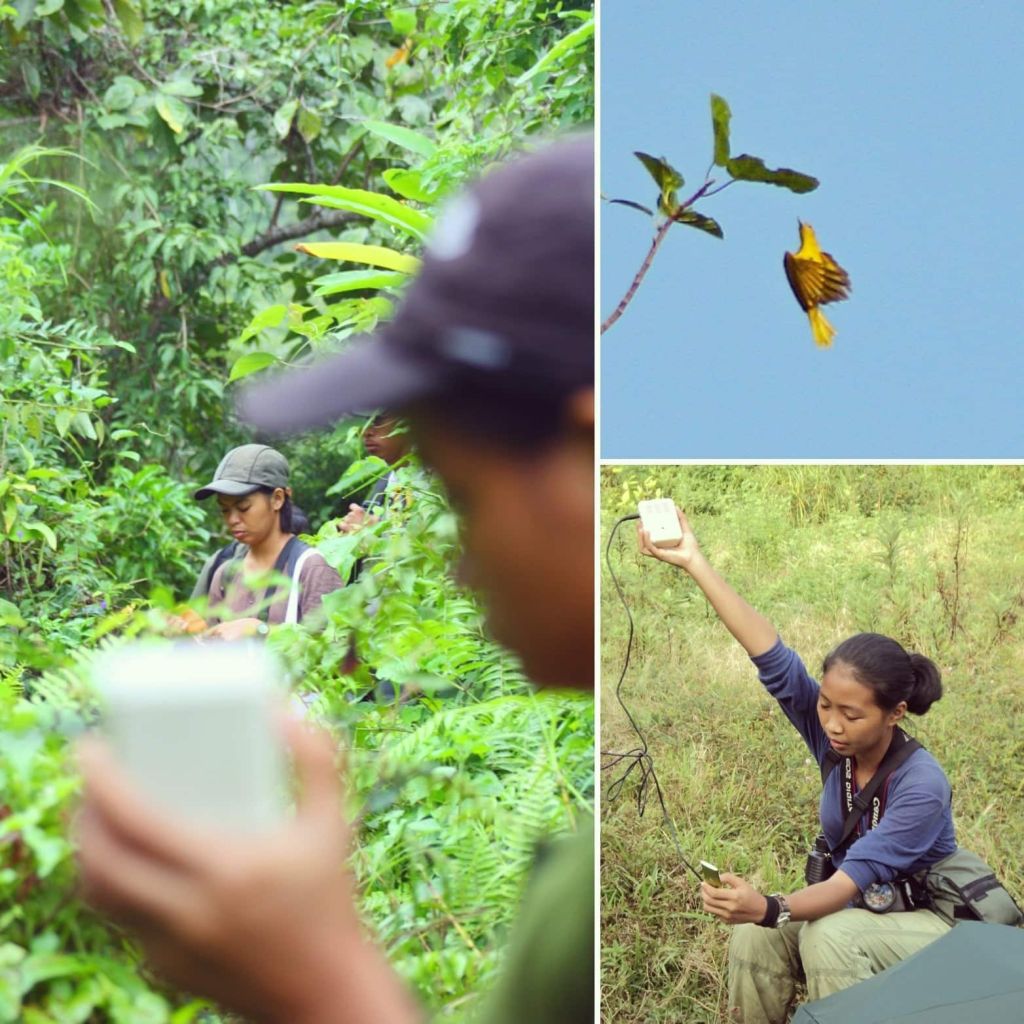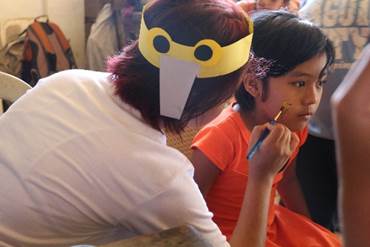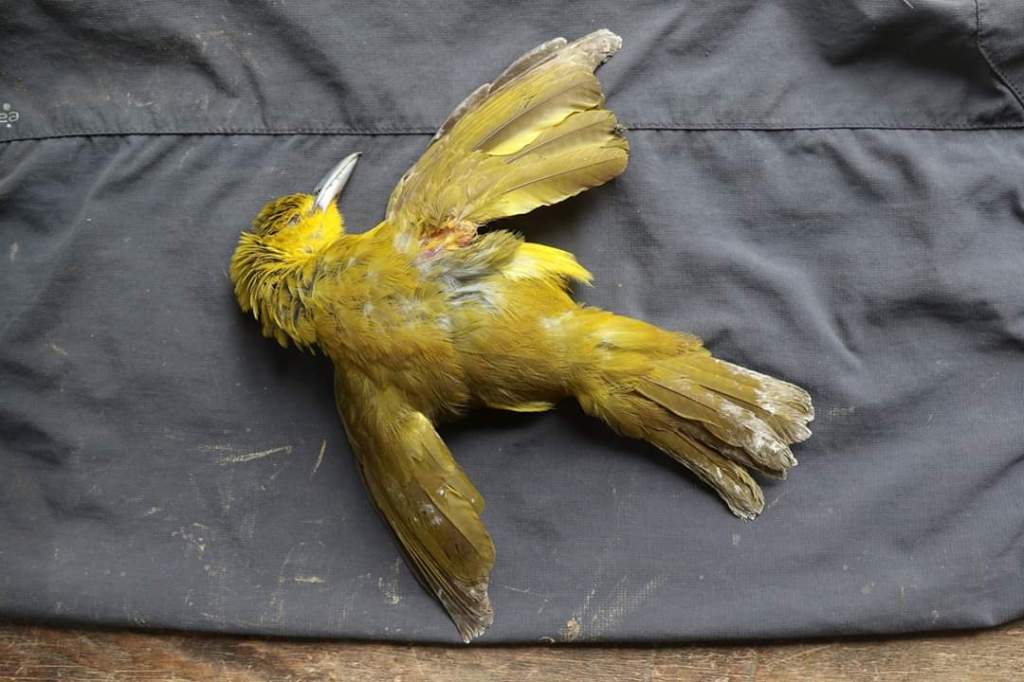by Joni Acay

The Isabela Oriole was categorized as a Critically Endangered species under the IUCN Red List and the just recently updated Philippine Red List of Threatened Species. With very little known information about this bird, it was presumed that there are less than 250 mature individuals left in the wild. This served as a precautionary measure to urge the immediate conservation of the species.

In 2003, the bird was sighted again for the first time in San Mariano, Isabela by birdwatcher, Rob Hutchinson and then later by Merlijn van Weerd and other staff of the Mabuwaya Foundation, a local non-government organization working in the area to conserve another critically endangered species, the Philippine Crocodile (Crocodylus mindorensis). While the bird was located inside a nationally protected area and a conservation organization already exists on-site, there was no targeted approach for the species itself. The ORIS Project stemmed out of this need.
In 2012, funding support from the Conservation Leadership Programme provided the means for our volunteer-based team of students to learn more about the Isabela Oriole and the threats to it and its habitat. This was essentially Nikdye (Nikki Dyanne Realubit) and I’s first project as newly-fledged biologists, emerging from under the wings of Ma’am Lala (Dr. Carmela Espanola). When our initial grant from CLP ended, ORIS Project continued operating as one of Mabuwaya’s programs where we were able to secure additional funding from the German Agency for International Cooperation (GIZ) and Zoos Victoria.
In our first year of survey, we set out to verify the occurrence of the Isabela Oriole in its historical locations in Luzon. We were successful in locating populations of this bird in the Northern Sierra Madre. But the sad state of its forest habitat in all sites also meant we were losing so many other species, and with that, an unsure future for both humans and wildlife.


We realized we had to convince the local communities and government agencies to protect its remaining forests. A key component to achieving this was to raise awareness and promote pro-environment attitudes — a particular specialization of the Wild Bird Club of the Philippines.
In 2006, we invited members of the club to celebrate Earth Day with us, together with Barangay Santa Margarita, DENR, and the local government of Baggao. Kids and adults alike had fun. The club members had themselves a lifer. And later that year, a 5,500-hectare local sanctuary was declared by the barangay.
But just this year, we were reminded that our efforts should not end here and that protected areas do not always mean that wildlife is protected.
On June 8, 2019, Mabuwaya Foundation posted on their Facebook page alarming news of a dead Isabela Oriole presented to them by members of the community. It appeared that it sustained wounds from a slingshot or an air gun. (Photos by Mabuwaya Foundation)
The ORIS Project is now implemented under a new organization, the Buhay-ilang Research, Education and Conservation Inc. We are a small group of birdwatchers and nature enthusiasts, scientists, educators, biologists, conservationists, and photographers who believe that conservation in the Philippines could be done differently. We conduct regular nature awareness and appreciation activities, such as the Bird and Breakfast in Masungi Georeserve. As part of our consultancy work, we have helped train wildlife enforcement officers on the biodiversity monitoring system for Cleopatra’s Needle Critical Habitat in Palawan. And aside from the Isabela Oriole, we also hope to be able to devise strategies to conserve other species and protect areas that are often overlooked.
For the ORIS Project, we now plan to explore new sites in the Sierra Madre where the oriole may be found, help develop plans for conservation in different sites, and nurture nature-loving communities.

In our recent activity conducted last June, with the help from fellow birdwatchers Irene Dy, Trinket and Adrian Constantino, the WBCP, and the local government, and funding support from multiple people, we brought birdwatching to another small village in Baggao. The 9 tour guides, 10 local government employees, and 2 DENR officials not only completed the 3-day seminar and training but also had awesome views of the Isabela Oriole, Luzon Bleeding-heart, Luzon Striped Babbler, and several other endemic birds. The aim of that activity was for the local guides to appreciate nature through birdwatching, show them the wonders in their backyard, and help them understand what we are trying to protect. It is our hope that they will eventually be trained further not only as guides for birdwatchers but also to help monitor the Isabela Oriole and other wildlife.
But as a start-up organization, we have very limited resources and are now trying to raise more funds to continue this work. We are also in need of field and camping equipment such as GPS, recorder, tents, and tarps and the like, for use during surveys as well as backpacks, binoculars, and bird identification guide books for our local guides. We are very grateful for every peso and equipment donated during the general assembly meeting and for WBCP for choosing the ORIS Project as the beneficiary of the silent auction. If anyone wants to help us further, they may contact us by emailing at buhay.ilang@gmail.com.





